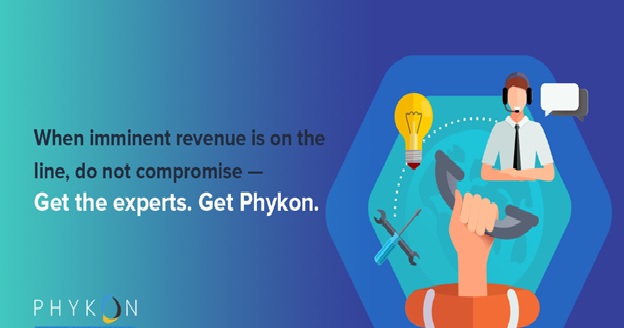Measurement and Improvement Of Customer Experience With Net Promoter Score (NPS)
Measurement and Improvement Of Customer Experience With Net Promoter Score (NPS): A strong customer base is the backbone of every business. Implementing an excellent customer service solution will help in the sustainable growth of your business. Each customer-brand interaction leaves an impression on the buyer. Every single encounter, like visiting the store, chatting with an employee, or browsing the company’s website, has a major impact on how customers perceive your brand. There are countless customer touchpoints throughout the customer journey that, together, make up the overall experience of the customer with the brand.
Customer Experience
2020 is seeing sweeping changes in customer service customer Experience or CX is expected to be the main brand differentiator. CX can be defined as the way consumers perceive how the brand interacts with them and treats them. Excellent customer service not only makes the customers happier but also improves brand loyalty and increases retention rates.
Customers who enjoy their experience with a brand are five times more likely to recommend a brand to others. Technological advancements have opened up a multitude of ways for brands to interact with the customers. Infinite opportunities are created that both delight and disappoint them. And so, it is important to choose the right customer service solution.
Customer needs have evolved with the rise of new technologies. Access to information at fingertips has driven consumers to crave experiences that are both instant and convenient. Successful brands try to meet those expectations through the best customer service solution.
Ways To Measure Customer Experience
You cannot improve what you cannot measure. There are various CX metrics. The most commonly used ones are NPS, CSAT, CAC and CES. Gathering data at key points of contact and in-depth user interviews will also help in improving the accuracy of the measurement. Here’s a brief look at these metrics…
NPS
NPS or Net Promoter Score surveys how likely the customer is to recommend the brand to a friend or colleague. It is often thought of as the loyalty metric. CSAT or Customer Satisfaction Score measures how satisfied the customers are with a recent brand interaction. CSAT score measures the short-term happiness of customers, usually on a scale of 1-3, 1-5 or 1-7.
CAC
The quality of your customer service solution and overall customer experience is measured through CAC or Customer Acquisition Cost. While it is used mainly for sales and marketing purposes, it is also crucial for customer satisfaction. It is calculated by dividing the total marketing expenses by the total number of customers gained during a particular period.
CES
CES or Customer Effort Score measures the customer effort involved to get an issue resolved. Initially, CES was calculated on a scale of 1 to 5 which ranges from Very low effort (represented by 1) to Very high effort (represented by 5). Later a scale of 1 to 7 was introduced, which represents the amount of effort involved — ranging from Extremely easy to Extremely difficult. Another method of CES calculation uses a scale which is marked as Easy/Difficult/Neither instead of a numbered scale.
More on NPS Or Net Promoter Score
It is an effective tool to measure, understand, and track customer experience and customer loyalty. The respondents are given a 10-point scale marked from 0 to 10 and are asked to rank how likely they are to recommend the brand to friends or colleagues. Score 0 indicates they are not at all likely to recommend the brand whereas 10 being the most likely to recommend. Based on the score, the respondents are classified into three categories — Promoters, Detractors, Passives.
A score of 9 or 10 represents promoters, they keep coming back to the brand and recommend it to others. 7 or 8 indicates passives. Passives may be satisfied with their experience but are more likely to switch to other competing companies. Detractors score 6 or below and may voice their dissatisfaction to others. Subtracting the percentage of detractors from the percentage of promoters gives you the total Net Promoter Score. World-class companies score between 75-80 per cent.
Net Promoter score gives brands an idea of how customers feel about them. Word-of-mouth recommendations are the most effective marketing tool which helps in driving sales. Hence, it is extremely helpful for companies to know if their customers are willing to promote their brand, to plan marketing strategies. NPS assists companies to predict repurchases and referrals. It is an easily-comparable, powerful metric which provides a quick snapshot of customer experience. High NPS score indicates the successful customer-centric business strategy of the brand.
Ways To Improve Customer Experience With NPS
Set up the right technology platform to automatically trigger the NPS survey from all customer interaction touch-points. The robust technology platform will help in the analysis of customer feedback data to accurately identify customer pain-points. In addition to the generic ‘likely to recommend’ question, add one or two more layers of questions to get a clear understanding of customer issues. It will help companies to identify shortfalls of their business process.
Apart from collecting and analyzing customer satisfaction data, it is equally important to take the necessary measures to improve the system. While analyzing the NPS score, figure out why the customer selected the particular score. Find out what customers like and dislike the most, whether it is quality, customer service, affordability or accessibility. After analyzing the NPS score, companies should have an open discussion with their customers to improve their experience. The main role of NPS is to establish strong customer relationships.
The Net Promoter Score is designed to measure customer experience as a whole. Implementation of the best NPS practices will help in converting detractors and passives to promoters. If companies are flexible to make changes in their business processes based on the customer feedback score, it will improve customer experience and ultimately will lead to the growth of the business. Though it is not advisable to rely only on NPS for measuring customer satisfaction, it is still popular among many companies as it is simple and easy to use. NPS will help organizations to start focusing on their customers rather than focussing too much on sales and transactions.
The success of any business lies in making their customers happy. And this can be achieved by paying close attention to what sways them and focusing your efforts on getting it right. Metrics help you assess if you are on the right track. With NPS, you can do just that — improve customer experience through the right customer service solution and turn happy customers into your brand advocates!




